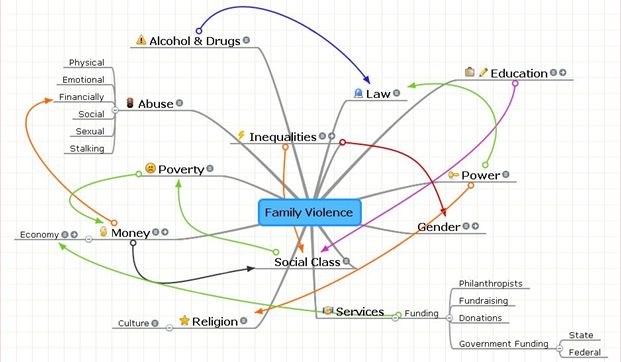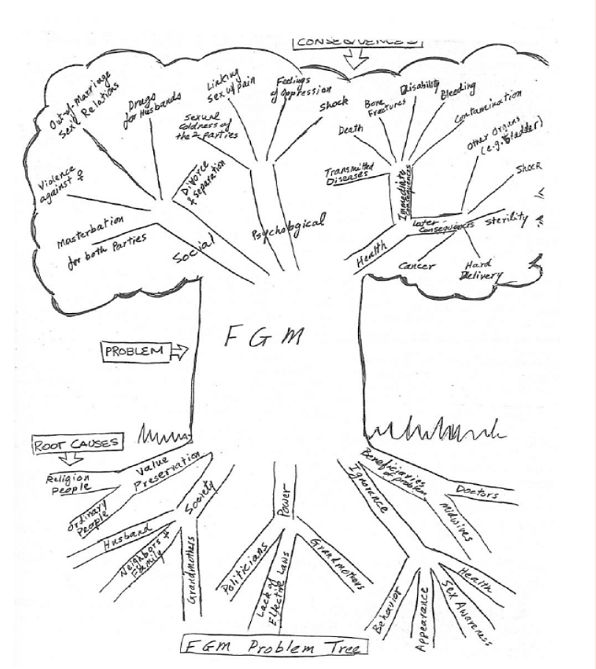Problem analysis defines the specific nature, extent, causes and consequences of the campaign issue so as to determine how the campaign can best address the issue and what can be changed. Factual, relevant and compelling evidence lends a solid basis to any campaign strategy, revealing the ways in which the intended change can happen. Without a clear, evidence-based understanding of causes and effects of the issue, it will be difficult to develop sound tactics and a theory of change.
The following are two easy-to-use creative tools commonly used in problem analysis: mind maps and problem trees.
Mind maps visualize ideas gathered in a brainstorming process
Practical instructions for mind mapping
Write a phrase summarizing the problem for analysis in the middle of a large sheet of paper, or on a card that you place in the middle of a pin board.
Identify key factors that have a bearing on the issue and write them, or place cards, in the space around the issue. Connect each factor to the issue with a line (dark grey in the example above). Factors that exert particularly strong influence should be placed closer to the central issue.
Identify secondary factors related to the key factors identified and write them next to the relevant key factors, connecting them again with lines (see bottom-right corner in the example above).
Draw lines or use logos to visualize the respective weight of each factor, or links between factors. The resulting image may look “messy”, but it is an effective way to map the complex factors that influence a campaign issue and decide which to prioritize.
The example below using Mindmeister, an online mind-mapping software, shows a mind map on the problem of family violence, placed at the center of the map. Participants in the mapping exercise have added the different factors likely to contribute to or reduce family violence, leaving some relatively vague and adding detail to those of special interest to the group (e.g. abuse, services). Subsequently, differently colored lines and arrows were drawn to show connections between the key factors identified.

Problem trees visualize the causes and effects of the campaign issue
Practical instructions for problem trees:
In group work, draw a large tree with the issue written across its trunk. Collect ideas from all participants and write or draw the multiple manifestations and consequences of the issue as branches of the tree, and the causes as the roots.
The example below reflects the perceptions and concerns of a particular group which analyzed female genital mutilation/ cutting (FGM/C) in its own context; a different group might produce somewhat different results. It can be useful to conduct several “problem tree” discussions with different groups including members of the target audience so as to gain an idea of the diversity of perceptions.

Source: The Change Agency, Problem Tree Analysis.